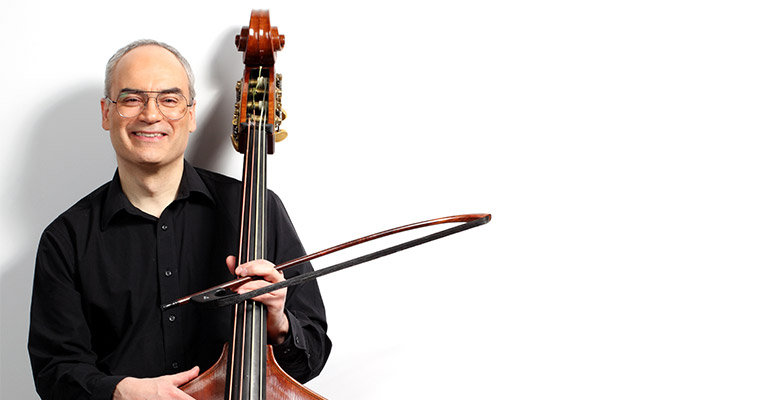What is the process of bow making?

Our Principal Bassist (and resident bow maker!) Max Kasper gives us the answer:
“When I was in University, I needed a new, better bow. At the time a good bow could cost upwards of $1,500. I found that I could buy the wood and parts to make a bow for about $50. (Hmmmmm, what to do? What to do?)
I had always been interested in instrument repair and making, so naturally, I decided to try to make a bow and see how it went. I could always buy one later if it did not turn out. I got some books and read up as much as I could and then started.
The first one was pretty bad, but they got better quickly, and the third one was halfway decent. (I used it to get this job, so it couldn’t have been too bad!) I am self-taught as a bowmaker, but many people have helped me out along the way with advice and feedback, and I have been constantly “studying” from books and through experiments. It has been an interesting journey and I am working on my 126th bow at the moment.
I make bows for all instruments, in both modern and period styles, but I mostly make bass bows. (Both Gary Karr and Joel Quarrington have a couple of my bows each.) I do not use Pernambuco, which is the traditional wood for bows, but have found other woods that I think work better. I mainly use Snakewood and Ironwood, but also have made bows out of Wamara and Bloodwood.
Of these woods, the most dense is Snakewood. It has a full sound, but not many “highs’ in the overtones. The next down is Ironwood, and it is actually a bit brighter than Snakewood, with more high overtones in the sound. (It vibrates a bit more than Snakewood.) Wamara is quite like Ironwood – the colouring is a bit different, but the characteristics are very close. It is only a wee bit lighter than Ironwood. Bloodwood is very light – very close to Pernambuco. It vibrates like crazy and gives a very lively sound. All the woods I use come from Guyana in South America.
I only make bows part-time as I am busy with the Symphony here in Halifax. I can only make 6-8 bows a year, sometimes less, depending on how busy I am. I mostly make them in the summer as that is when I have the most free time.
As to how one makes a bow…Well, it’s pretty simple in concept. As the saying goes: you take a piece of wood and then carve away everything that doesn’t look like a bow! There is slightly more to it of course, but that is mere technique. The art lies in understanding the wood, and trying to make a beautiful object with a high functionality.
The main thing about bows that people don’t realize is that the curve is added after the bow is carved. They are made straight, then bent with a dry heat to the curve that the maker wants. Different curves have slightly different playing properties.”
